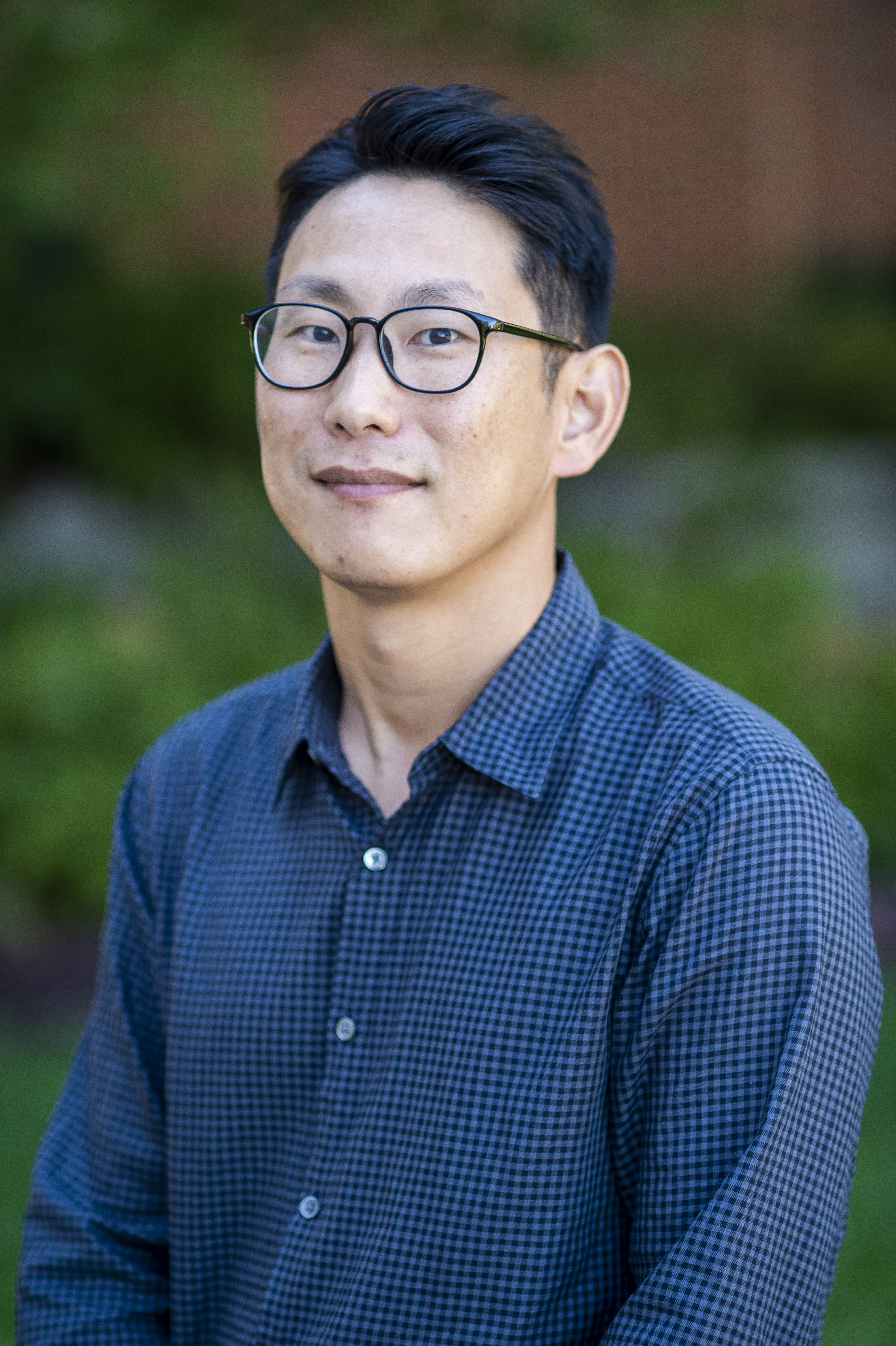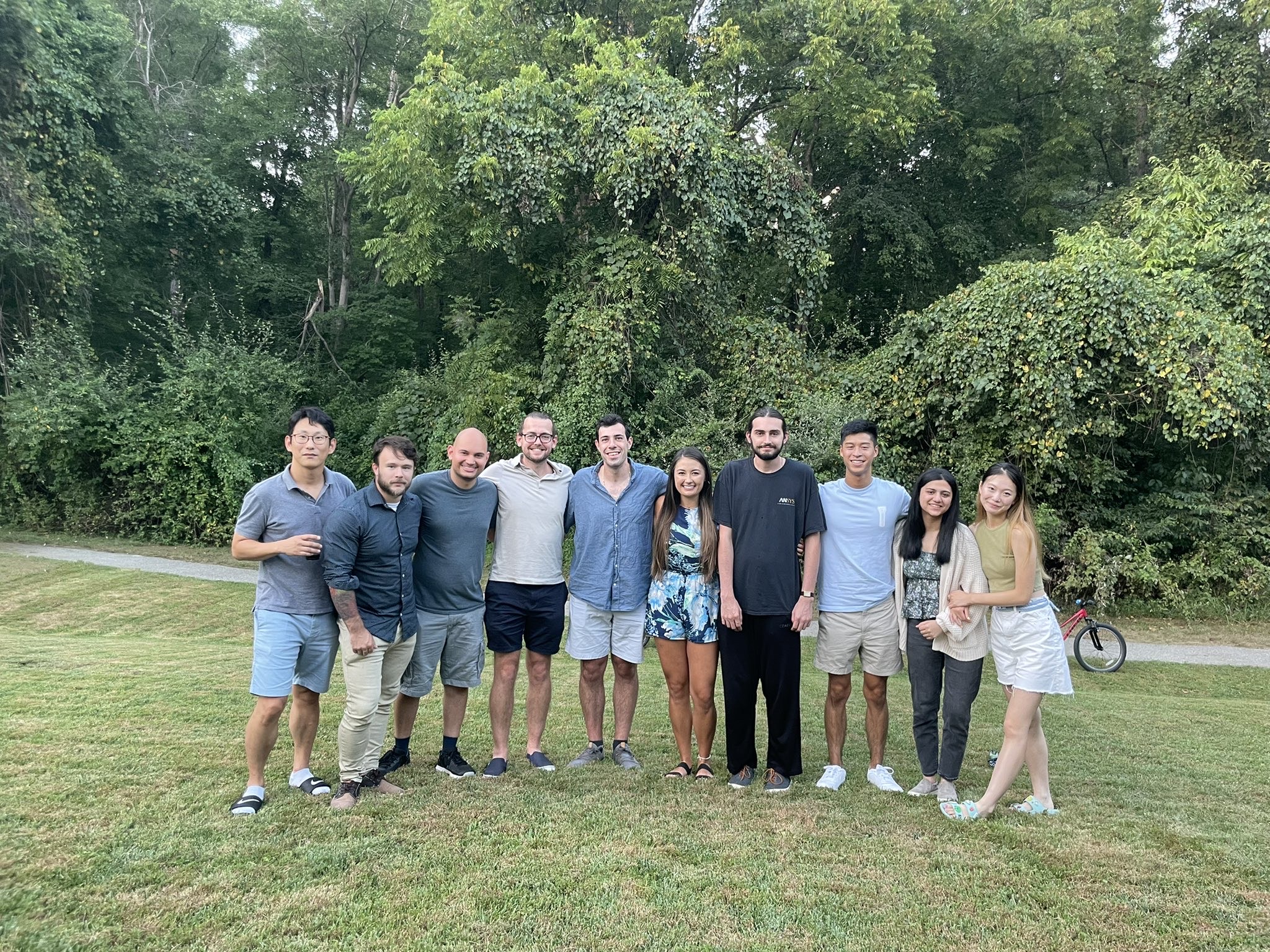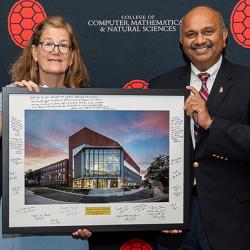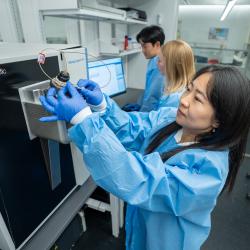Preparing for the Next Pandemic
NSF CAREER awardee Jinwoo Lee looks forward to continuing his investigations into the Lassa virus and other infectious diseases when he moves into the new Chemistry Building.

Jinwoo Lee, an assistant professor of chemistry and biochemistry at the University of Maryland, is a man with a mission: to fight dangerous viruses that threaten human health.
When he was an undergraduate at Hanyang University in Korea, Lee witnessed the panic and chaos caused by the SARS virus outbreak—a profound experience that triggered his interest in biochemistry and global health. A few years later in 2013, Lee saw the devastating impact of the Ebola virus, which at the time was the subject of his postdoctoral research at the University of Virginia. And soon after he joined UMD in 2018, Lee was again reminded of the havoc that can be created by a worldwide pandemic as the world fought back against the latest viral threat, COVID-19.
Lee isn’t sitting around waiting for the next pandemic, though. He spends every day working to pinpoint the possible contagions that could become the next pandemic and investigate how their molecular structures impact disease progression.
“My lab currently focuses on a disease called Lassa virus, which comes from a family of viruses that can evolve into pandemics,” Lee said. “Lassa’s structure and the ways it can enter and attack a cell are kind of similar to that of major pandemic-causing diseases that we’ve already experienced, including Ebola, HIV and coronavirus. All of these similarities make Lassa fever something to look out for.”
Pinpointing possibilities and supporting students
Lassa fever is an emerging animal-borne virus that damages multiple organ systems and blood vessels. The disease presents in humans with flu-like symptoms and infects almost all tissues in the body and inhibits the immune response. Currently, there is no approved vaccine against Lassa fever for use in humans—and that’s something that Lee wants to change as he learns more about how the virus’ membrane proteins contribute to its pathogenesis.
“Structure relates to function, so understanding how the protein-protein and protein-lipid interactions in a cell membrane impact a virus’ progression is crucial to developing interventions and treatments against it,” Lee explained. “The work we’re doing here with Lassa will also get us closer to developing antivirals against other arenaviruses that have similar structures and mechanisms.”
In spring 2023, Lee received the National Science Foundation’s (NSF) Faculty Early Career Development (CAREER) award to continue this important research on viruses. This is NSF’s most prestigious award for early-career scientists who have demonstrated notable and promising achievements in both teaching and research.
The $820,000 grant will support his lab’s investigation into Lassa cell structure and entry mechanisms using biophysical tools like nuclear magnetic resonance spectroscopy (NMR). In addition, the award will support transfer students conducting research in Lee’s lab—a mission that for him hits especially close to home.

“I noticed that transfer students who ask to help with research in my lab had many unique difficulties they had to overcome,” Lee explained. “Many of these transfers are international students, minorities or financially disadvantaged individuals. And because they can only transfer in as juniors, they only have one summer to work in my lab, which is not nearly enough time to do effective research. With this grant, I’ll have the resources to recruit them earlier and provide enough resources to support their efforts in my lab.”
Pursuing a passion for chemistry
As someone who crossed oceans and traveled thousands of miles to pursue his passion for chemistry, Lee understands the importance of mentoring students as they begin their scientific careers.
“I traveled to the U.S. to explore the science outside of my native country, South Korea,” Lee said. “There was a huge world waiting for me after I finished my bachelor’s there. I couldn’t wait to see and experience the diversity of thought and ideas that existed beyond my hometown.”
Diversity was a driving factor in Lee’s decision to choose Maryland after he concluded a postdoc at the University of Virginia. Maryland boasts a melting pot of different cultures and values—something that Lee and his family love and find unique after living in many other places.
“We found a place where we could be ourselves but also safely experience new things every day,” Lee explained. “You don’t see that much in many other parts of the world, so my wife and kids really appreciate that about Maryland. And of course, there’s also really great science here.”
As he settled in at UMD, Lee quickly grew to love the community’s diversity, creativity and openness to try new things.
“Meeting all kinds of people and sharing ideas that we might never have encountered before is key to making discoveries and breakthroughs,” Lee said. “It’s why I came to the U.S. and why I came here to UMD.”
A new opportunity
Soon, Lee and several colleagues will move into a brand-new wing of the Chemistry Building, after construction finishes in late 2023. The $116 million project includes state-of-the-art facilities to support the department’s research programs, in fields from biomolecular sciences and advanced materials to quantum chemistry. Lee is excited to access and use these new tools for his infectious disease research; he also feels that the move will be a major opportunity to expand the synergies he has with his lab group and colleagues.
“Right now, the biochemistry and biomolecular faculty and staff are physically separated in different wings of the building. It also takes us five to 10 minutes to walk over to some instruments we use, so it’s fairly difficult to see all of us together without some concerted effort to meet,” Lee explained. “But in the new building, we’ll all be more closely located and be able to have more conversations, more collaboration and hopefully more opportunities to expand research into different directions.”
Lee hopes that his lab’s new home will bring together both his current collaborators and his future ones, allowing him to find answers that may help him tackle one of the world’s greatest grand challenges: global health.
“The new building is going to add another dimension to the work we’re doing, from how we currently collaborate to how we actually analyze Lassa and other viruses,” Lee said. “I really look forward to these enhancements and the exciting new breakthroughs we’ll make there.”







